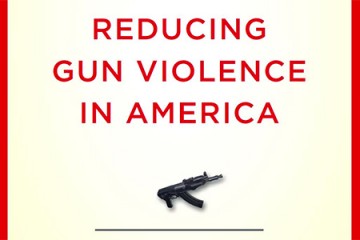A Johns Hopkins study of more than 704,000 people who arrived alive at a United States emergency room for treatment of a firearm-related injury over a nine-year period finds decreasing incidence of such injuries in some age groups, increasing trends in others, and affirmation of the persistently high cost of gunshot wounds in dollars and human suffering.
Among the findings—firearm-related injuries account for approximately $2.8 billion in emergency department and inpatient care each year.
A report on the analysis, published in the October issue of Health Affairs, is designed to highlight updated trends in types of firearm injuries and the kinds of firearms commonly used over time.
"Much of the existing literature on firearm-related injuries focuses on pre-hospital statistics with limited data evaluating contemporary estimates for firearm-related injuries," says Faiz Gani, a research fellow at the Johns Hopkins Surgery Center for Outcomes Research.
Although firearm-related deaths are the third-leading category of injury-related deaths in the United States, efforts to understand national trends in incidence, prevalence, and risk factors, as well as a quantifiable financial cost of firearm-related injuries, have been limited, Gani says.
Gani and colleagues analyzed data from a nationally representative sample of 704,916 patients in the United States who arrived at an emergency room alive for treatment of a firearm injury from 2006 to 2014. Approximately 89 percent of the patients in the study group were men, and more than 49 percent of patients were between the ages of 18 and 29.
The research team found that:
Firearm injuries were ninefold higher among male than female patients and were highest among males 20 to 24 years old
The average emergency department and inpatient charges annually were $5,254 and $95,887, respectively, resulting in approximately $2.8 billion in annual charges for the group studied. Gani notes that more than half of patients in the study sample were uninsured or self-paying, which means they either bear the burden of the actual hospital charges, or these charges are unrecovered and add to the overall uncompensated care provided by hospitals and health care systems.
The overall incidence of emergency department admissions for firearm-related injuries decreased 22.9 percent from 2009 to 2013. However, emergency department visits generally increased for those older than 30 and increased overall for the entire study population in 2014.
The proportion of patients who arrived with a previously diagnosed mental health disorder rose over the study period
The proportion of patients injured by unintentional firearm-related injury increased. The majority of patients were injured by assault (49.5 percent) or unintentional injury (35.3 percent). Attempted suicide accounted for 5.3 percent.
Gani says the study's main limitation is that it did not account for pre-hospital deaths or those who didn't go to an emergency department after a firearm-related injury, so it likely underestimates the overall burden of firearm-related injuries, but he believes the new data paints an updated picture of gun violence trends.
"Until people are aware of the problem's full extent, we can't have the best informed discussions to guide policy," Gani says.
Other authors on this study include Joseph V. Sakran and Joseph K. Canner of the Johns Hopkins University School of Medicine.
Posted in Health
Tagged gun policy, gun control, emergency medicine










